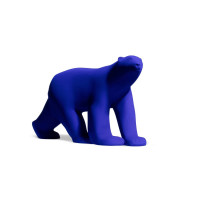Yves Klein
Yves Klein (Frankreich, 1928–1962) war ein bahnbrechender Künstler und eine Schlüsselfigur der europäischen Nachkriegskunst. Bekannt für sein charakteristisches 'International Klein Blue' (IKB), erforschte er mit seinen monochromen Gemälden und Performances Spiritualität und Immaterialität. Kleins innovative Praktiken, wie die Körpermalereien 'Anthropometrie' und konzeptuelle Werke, beeinflussten Bewegungen wie Minimalismus und Konzeptkunst.
- Zuletzt hinzugefügt
- Preis (Niedrig-Hoch)
- Preis (Hoch-Niedrig)
- Jahr (Niedrig-Hoch)
- Jahr (Hoch-Niedrig)

Was ist Minimalismus?
Minimalismus ist ein Stil in Musik und bildender Kunst, der durch reduzierte Designs und Einfachheit gekennzeichnet ist. Er begann in der westlichen Kunst nach dem Zweiten Weltkrieg und erlangte insbesondere in der amerikanischen bildenden Kunst an Bedeutung. Minimalismus zieht stark auf Aspekte des Modernismus zurück und wird oft als Reaktion auf den abstrakten Expressionismus und als Vorläufer der post-minimalistischen Kunstpraktiken gesehen. Zu den prominenten minimalistischen Künstlern gehören Agnes Martin, Donald Judd, Robert Morris, Frank Stella und Dan Flavin.













